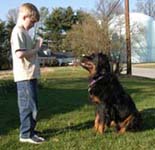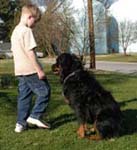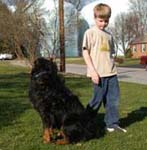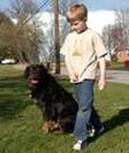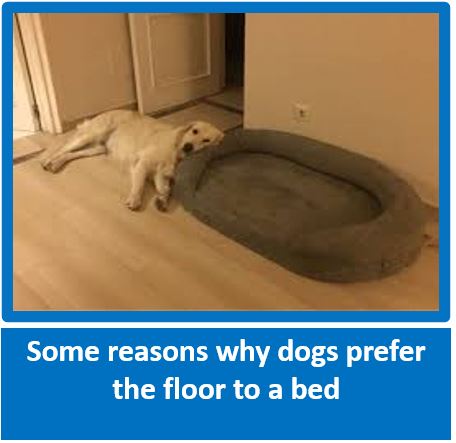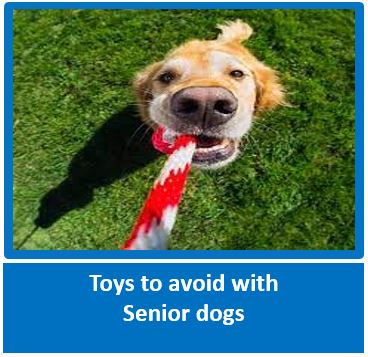
If you want to do Clicker training or teach your dog tricks, we have 2 great options for you to choose from. We also have a huge variety of top name, top quality dog toys to suit even the fussiest pet, as well as toys for cats and your small critters. It does not stop there - we have just about everything else you will need for your pet, including the small critters. www.mcmac.co.za
Clicker Training On-Line Course by Mary Woodward
www.greenwooddogs.com : www.clickerlessons.com
Lesson Five
Sit & Down & Stay
Many people are amazed at how quickly dogs pick this up! In our classes, we usually pick the most wriggly one to demonstrate this one. It's fun to show how well it works.
Stand in front of your sitting dog. Say “Stay!” If he holds his position for a second or two, C&T. If he gets up to get the treat, lure him back into position to get it. Work on this, doing it 5-6 times per session, gradually increasing the time by a couple of seconds a time. You should also practice taking small steps (1-2 at a time intially) back & forth in front of him. C&T immediately if he holds position while you are moving. If he lies down, then help him back up and try again. Since the click ended the exercise, he might get up after hearing it - if so, then lure him back to a sit before giving him the treat.The hand signal from the front is just a little wave with your palm facing him.
The cue “Stay” is only said the the beginning of each repetition - do NOT repeat it the entire time the dog is staying!
Remaining just 1-2’ in front of your dog, begin increasing the time he needs to remain in the Stay before you C&T by a few seconds each time. Practice this at least once every day, doing about 5 reps per session, until your dog can hold the sit stay for 1 solid minute before you C&T. What a good dog! At that point you want to start being variable with the time, getting longer & longer times but also occasionally C&T’ing after very short stays. This will make the behavior much stronger. For example, do a 60 sec Stay, then a 65 second one. Then 10 sec, 70, 67, 74, 15, 80, 3, 84, 76...
You will also start adding distance at this point (being variable about it by including some closer Stays as well), but remember that we only work on one part of a behavior at a time, so when you start going farther away you should reduce your time expectations drastically. When both long stays (up close) and distance stays (for short times) are both reliable, you can start putting them together.
Sit & Down & Stay
Many people are amazed at how quickly dogs pick this up! In our classes, we usually pick the most wriggly one to demonstrate this one. It's fun to show how well it works.
Stand in front of your sitting dog. Say “Stay!” If he holds his position for a second or two, C&T. If he gets up to get the treat, lure him back into position to get it. Work on this, doing it 5-6 times per session, gradually increasing the time by a couple of seconds a time. You should also practice taking small steps (1-2 at a time intially) back & forth in front of him. C&T immediately if he holds position while you are moving. If he lies down, then help him back up and try again. Since the click ended the exercise, he might get up after hearing it - if so, then lure him back to a sit before giving him the treat.The hand signal from the front is just a little wave with your palm facing him.
The cue “Stay” is only said the the beginning of each repetition - do NOT repeat it the entire time the dog is staying!
Remaining just 1-2’ in front of your dog, begin increasing the time he needs to remain in the Stay before you C&T by a few seconds each time. Practice this at least once every day, doing about 5 reps per session, until your dog can hold the sit stay for 1 solid minute before you C&T. What a good dog! At that point you want to start being variable with the time, getting longer & longer times but also occasionally C&T’ing after very short stays. This will make the behavior much stronger. For example, do a 60 sec Stay, then a 65 second one. Then 10 sec, 70, 67, 74, 15, 80, 3, 84, 76...
You will also start adding distance at this point (being variable about it by including some closer Stays as well), but remember that we only work on one part of a behavior at a time, so when you start going farther away you should reduce your time expectations drastically. When both long stays (up close) and distance stays (for short times) are both reliable, you can start putting them together.
Remember that unlike most of the other behaviors we teach dogs to do upon our request, the stay is not very natural. In the wild, a pup who stayed while the pack went away was not likely to survive for long! So, be patient and increase your time (and later distance) in small increments. The younger the pup the more of a factor this is going to be - especially the distance. Give the baby a break & save working on distance until he is a bit older so he doesn't become stressed.
Next steps involve having you move around more, having mild distractions, etc.. Each time that you increase the difficulty by doing something like that, remember to back off on the difficulty of the other aspects - distance & time. Success breeds success! When you are ready to phase out the clicker, then you will release your dog from the stay with “Okay!” Be careful to never give the stay cue unless you are going to be watching that he does, indeed, stay, and that you always release him when he is done. If you forget, then he willl earn to just release himself after a while.
The Down Stay is taught the same way - just have your dog in a down position first!
Next steps involve having you move around more, having mild distractions, etc.. Each time that you increase the difficulty by doing something like that, remember to back off on the difficulty of the other aspects - distance & time. Success breeds success! When you are ready to phase out the clicker, then you will release your dog from the stay with “Okay!” Be careful to never give the stay cue unless you are going to be watching that he does, indeed, stay, and that you always release him when he is done. If you forget, then he willl earn to just release himself after a while.
The Down Stay is taught the same way - just have your dog in a down position first!
|
Introduction
Charging the Clicker Targeting Sit, Down, Stand Sit, Down, Stay Leash Walking Recall Wait Nail Clipping Leave It |

